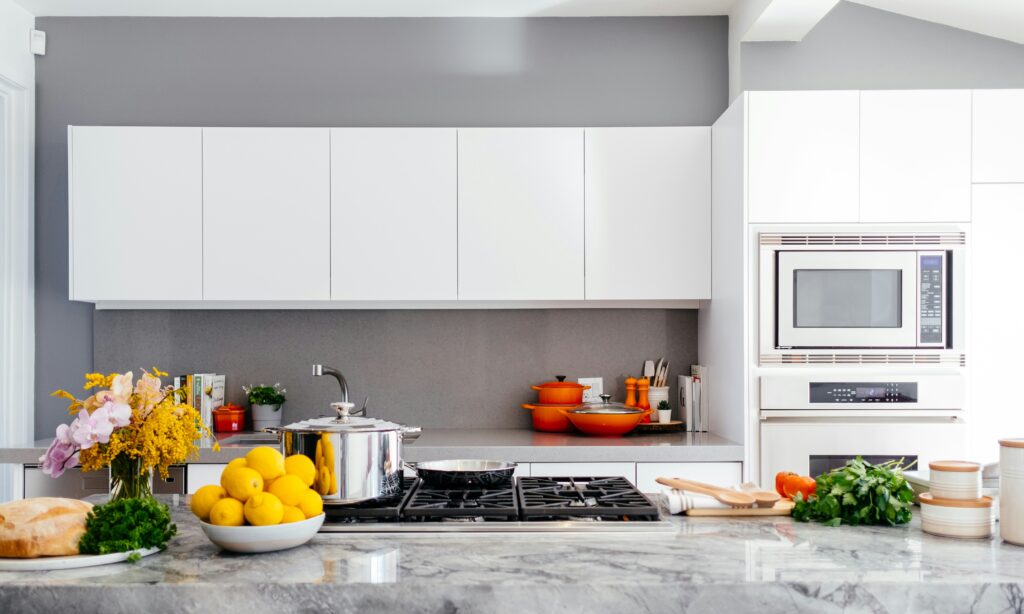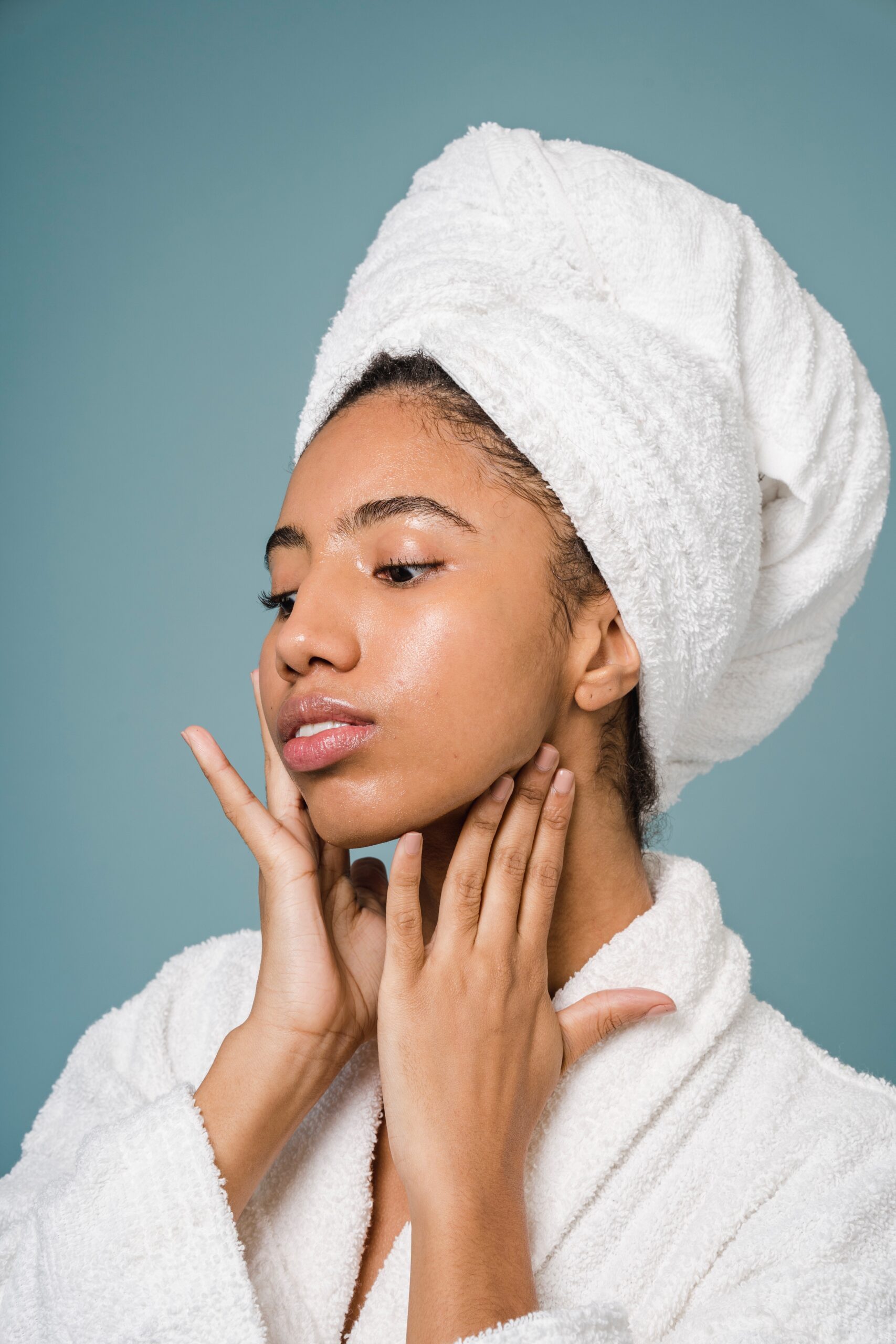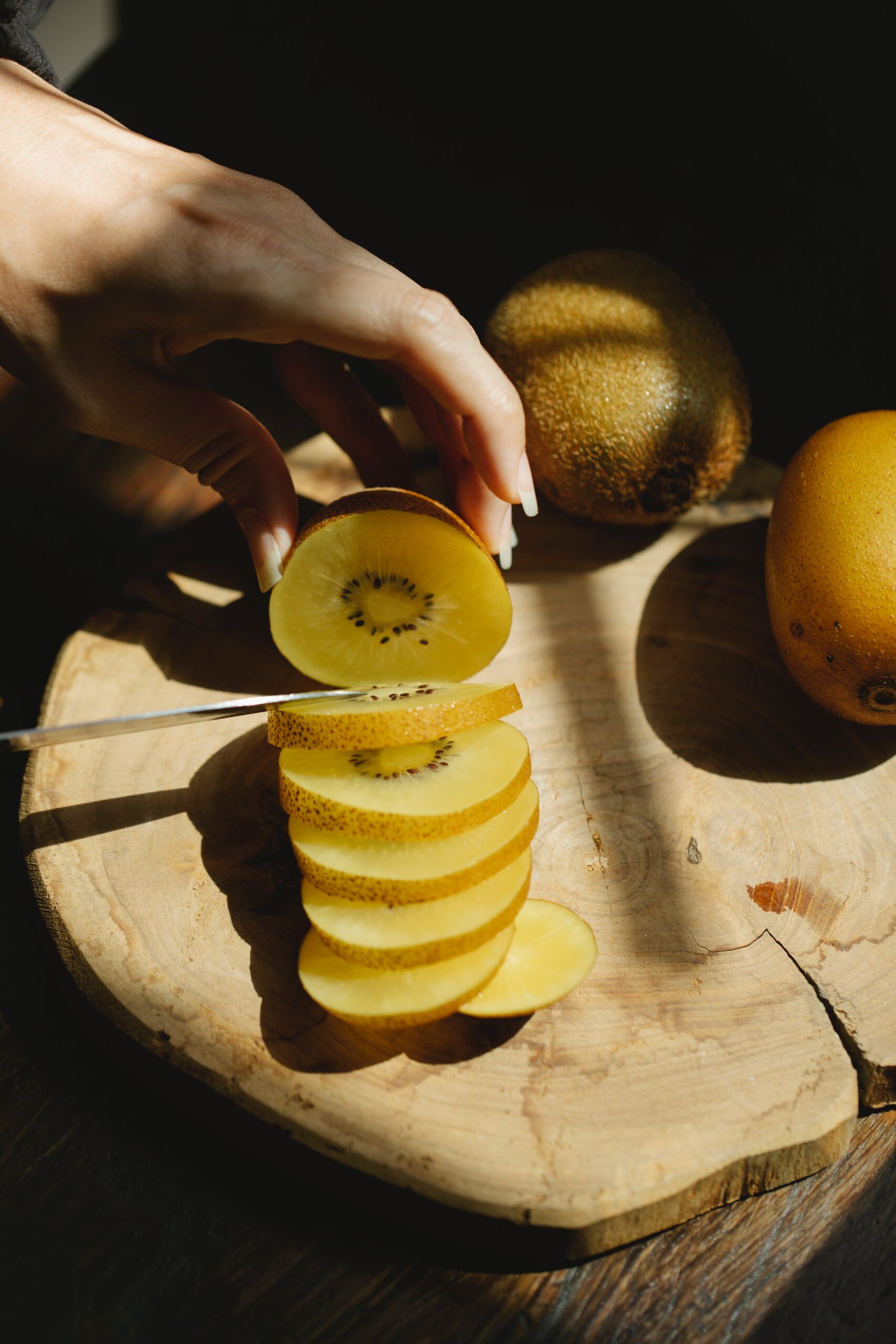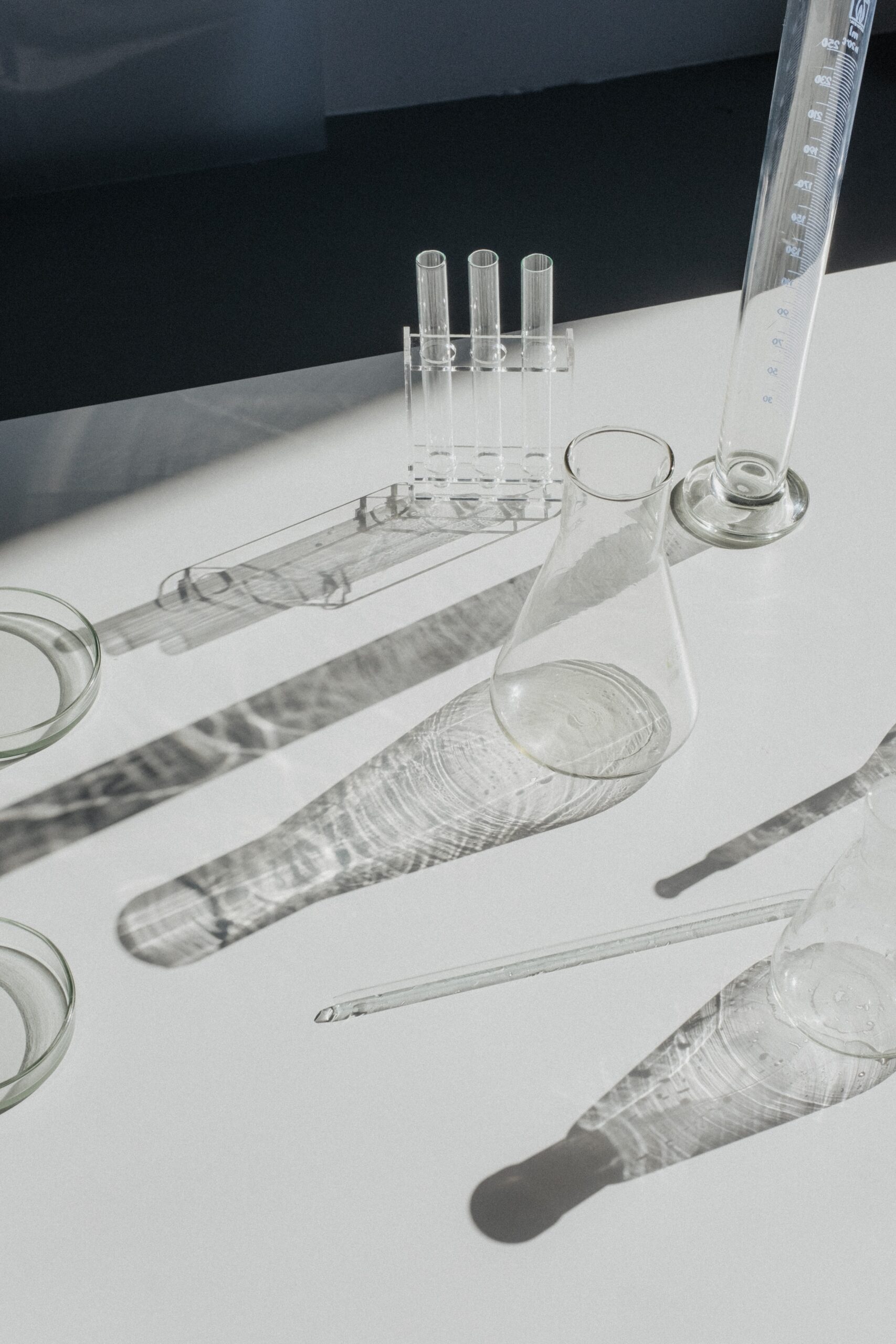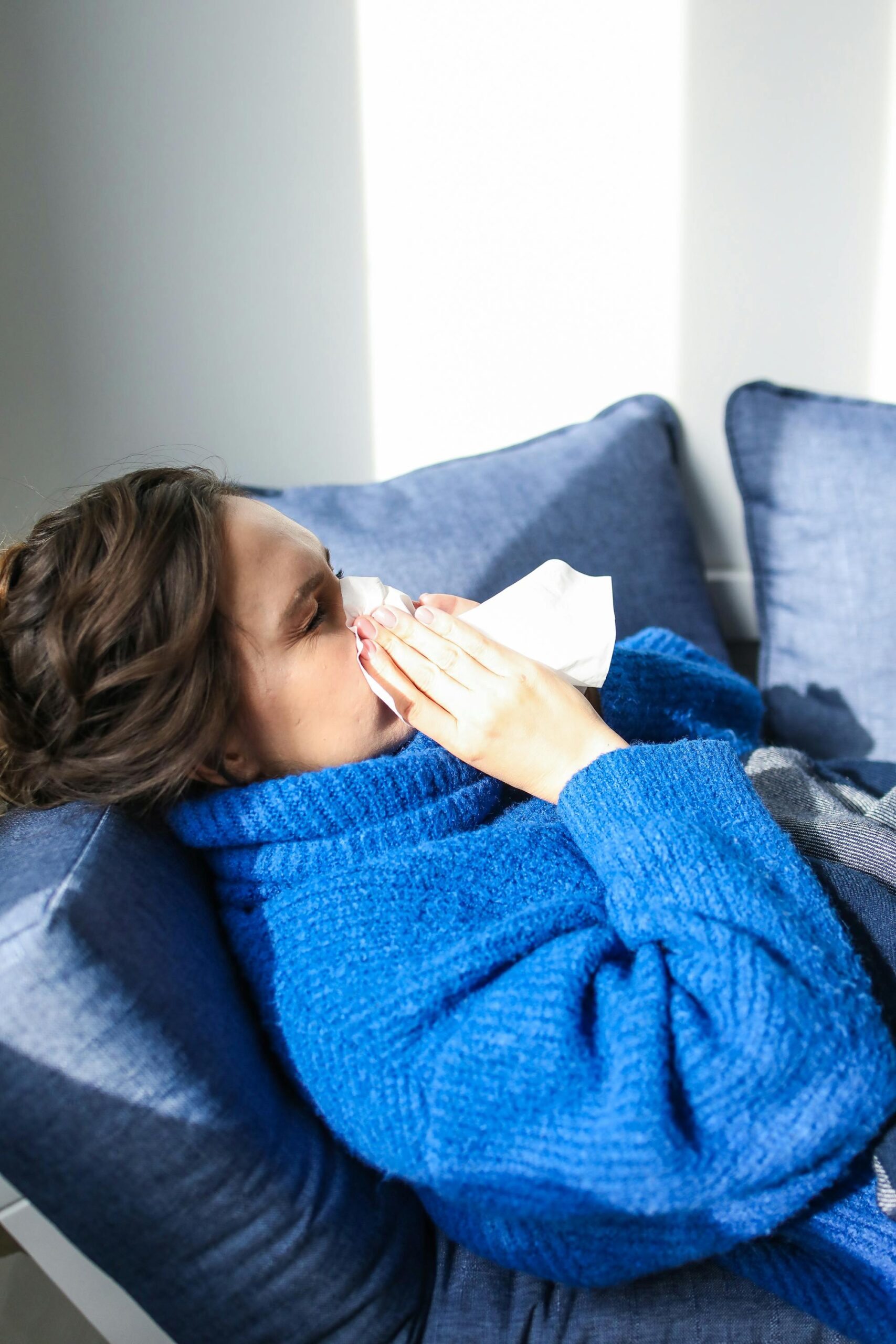In the hustle and bustle of daily life, we often overlook the impact our living environment can have on our overall well-being. As a functional medicine clinic, we advocate for a holistic approach to health, addressing not only what we put in our bodies, but also the surroundings we immerse ourselves in daily.
In this article, we’ll delve into the concept of “detoxing your home” — what it truly means, why it matters, and how it can significantly contribute to your overall health.
What does “detoxing your home” really mean?
Detoxing your home goes far beyond the typical ‘spring cleaning’. Clearing physical space by getting rid of items you no longer use is important, but detoxing your home goes much deeper than that.
It involves identifying and minimizing exposure to harmful substances present in various household items. These substances, often referred to as toxins, can disrupt your hormonal balance, compromise your immune system, and contribute to a range of negative health outcomes. More on that to come.
Unfortunately, many common household items like cleaning products, personal care items, cookware, sheets and mattresses, and even home furnishings run the risk of containing toxins.
Taking proactive steps to reduce these toxins is a crucial aspect of creating a healthier living space. By opting for natural, less-toxic alternatives and embracing higher quality materials, you can cultivate a space that nurtures your health from the inside out.
As a functional medicine practitioner, here’s why I recommend detoxing your home.
Your body is an intricate system that responds to the environment around you. Toxins present in your home can accumulate over time, burdening your detoxification pathways and potentially leading to chronic health issues.
Environmental toxins have the potential to contribute to cancer growth, disrupt glucose and cholesterol metabolism, and trigger insulin resistance and obesity. These adverse effects stem from a myriad of mechanisms, including an increase in inflammation, oxidative stress, mitochondrial injury, and altered thyroid metabolism. The impact of these toxins can extend beyond isolated health concerns and affect your entire body.
From a functional medicine perspective, inflammation is often an underlying factor in many diseases. Getting to the root of the inflammation is necessary to truly heal from the source. If your environment is making you sick, it’s really hard to get healthy in that same environment. Fortunately, a few intentional changes can make a world of difference in the health of your home and directly translate to the health of your body.
Detoxing your home aligns with the principles of functional medicine, focusing on prevention and root causes rather than just symptom management. By creating a clean, lower toxin environment, you can support your body’s natural ability to heal and thrive.
Ingredients to be careful of and how they impact your health.
Toxic ingredients lurk in everyday products, affecting your health in subtle yet impactful ways. These substances can disrupt hormone function, contribute to respiratory issues, and even pose long-term health risks, including cancer. Being vigilant about ingredient labels is essential to avoid these harmful compounds.
Here’s a list of household toxins to avoid:
1. Parabens
- Found in: Cosmetics, skincare products, and personal care items.
- Concerns: Endocrine disruption, linked to hormone-related issues.
2. Phthalates:
- Found in: Plastics, fragrances, personal care products, and food packaging.
- Concerns: Endocrine disruption, potential reproductive and developmental effects.
3. Bisphenol A (BPA):
- Found in: Plastics, food and beverage containers, and epoxy resins.
- Concerns: Endocrine disruption, potential reproductive and developmental effects.
4. Glyphosate:
- Found in: Commonly used herbicides, such as Roundup.
- Concerns: Linked to potential disruption of the gut microbiome and possible carcinogenicity.
5. Perfluorinated Chemicals (PFCs):
- Found in: Non-stick cookware, water-resistant clothing, and some food packaging.
- Concerns: Linked to various health issues, including hormone disruption and potential immune system effects.
6. Artificial Fragrances:
- Found in: Personal care products, cleaning products, candles and air fresheners.
- Concerns: Potential respiratory and skin irritation, and some may contain phthalates.
7. Heavy Metals (Lead, Mercury, Cadmium, Arsenic):
- Found in: Some seafood, contaminated water, certain cosmetics, and some dental fillings.
- Concerns: Neurological damage, developmental issues, and other systemic health problems.
8. Volatile Organic Compounds (VOCs):
- Found in: Paints, cleaning products, personal care items, building materials, fuel, office equipment, furniture, air fresheners, pesticides, and industrial solvents like those used in dry cleaning.
- Concerns: Headaches, dizziness, eye and respiratory tract irritation. Long-term exposure can cause liver, kidney, and central nervous system damage, and increase the risk of cancer.
9. Organophosphate Pesticides:
- Found in: Conventionally grown fruits and vegetables.
- Concerns: Linked to neurodevelopmental issues, potential endocrine disruption, and adverse effects on the nervous system.
10. Triclosan:
- Found in: Antibacterial soaps, toothpaste, and some household products.
- Concerns: Potential endocrine disruption and antibiotic resistance.
11. Formaldehyde:
- Found in: Building materials, certain cosmetics, and some household products.
- Concerns: Respiratory irritation, potential carcinogenicity, and allergic reactions.
12. Asbestos
- Found in: Some building materials, insulation, and talc-containing products.
- Concerns: Linked to respiratory diseases, including lung cancer and mesothelioma.
13. Chromium- 6
- Found in: Industrial processes, stainless steel production, and some water sources.
- Concerns: Linked to increased cancer risk and potential adverse effects on respiratory and gastrointestinal systems.
14. Dioxin
- Found in: Environmental pollutants, industrial processes, and some pesticides.
- Concerns: Known carcinogen, with potential impacts on reproductive and immune systems.
15. Flame Retardants
- Found in: Furniture, electronics, and certain textiles (especially children’s clothing).
- Concerns: Linked to potential endocrine disruption and adverse effects on neurodevelopment.
16. Perchlorate
- Found in: Some fertilizers, fireworks, and in drinking water.
- Concerns: May interfere with thyroid function and hormone production.
17. 2,4-D
- Found in: Herbicides, weed killers, and certain lawn care products.
- Concerns: Potential endocrine disruption and links to reproductive issues.
It’s important to note that these substances can have varying degrees of risk depending on exposure levels and individual sensitivity. For detailed and up-to-date information, we recommend referring to the Environmental Working Group’s (EWG) databases.
Where to look for toxins and what to use instead?
We know the list above can feel overwhelming, but don’t panic! There are so many ways to reduce your exposure to these toxins and we’ll break it down into areas of your home. Start with one and move on when you’re ready. Remember, none of this has to happen overnight – consistent, conscious choices make a remarkable difference.
Detoxing Your Kitchen
It’s probably no surprise that we love spending time in the kitchen. For us, it’s the heart of the home and deserves special attention because unfortunately, it can be a minefield of toxins.
1. Invest in a Reusable, BPA-Free Water Bottle
Opt for a reusable water bottle made from BPA-free materials to reduce your exposure to harmful chemicals. Stainless steel or glass options are excellent choices.
2. Replace Your Plastic Containers with Glass or Stainless Steel
Plastic containers can leach harmful chemicals like phthalates into your food, especially when they’re heated up. A great way to reduce your overall toxic exposure is to switch to glass or stainless steel containers for safer food storage. Beeswax wraps are an excellent alternative to plastic wrap for keeping food fresh.
Investing in glass or stainless steel containers is an upfront investment, but if you take care of them, they’ll last much longer than their plastic alternatives, hopefully saving you money in the long run. Many thrift stores have an array of glass containers that you could pick up for a fraction of the cost. When possible, buy items from the grocery store in glass so you can reuse the containers in the future.
3. Choose Better Cookware
Instead of non-stick cookware that can leash chemicals into your food, choose cast iron, ceramic, or stainless steel pans. Our favorite cookware brands are Caraway Home and Lodge Cast Iron.
4. Invest in a Water Filter
Consider installing a water filter to ensure that the water you use for cooking and drinking is free from contaminants. This simple step contributes to a healthier kitchen environment. We love the AquaTru water filter for removing the most common contaminants.
5. Choose Organic Foods When Possible
Prioritize organic produce to limit exposure to pesticides and synthetic chemicals. Keep an eye out from the EWGs annual Dirty Dozen and Clean Fifteen list to determine which items to purchase organic. Printing the list and keeping them in your purse makes for an easy reference when you’re at the grocery store.
Detoxing Your Air
People tend to consider their air quality only when they can see the contaminants. When there are wildfires close by or you’re in an industrialized city, it’s easy to see the smog and wish for cleaner air. But harmful airborne particles can go unseen and since most of us spend much of our time indoors, clean air is an essential piece of creating a healthier home.
1. Air Filter
Step one is to invest in an air filter to capture airborne particles and improve indoor air quality. Regularly replace filters to ensure optimal performance. The Air Doctor Pro is our filter of choice and after you change the filter for the first time, you’ll see exactly why you should be filtering your air!
2. House Plants (Air-Purifying Plants)
Incorporating air-purifying plants into your living spaces is a fun, aesthetically pleasing way to improve the health of your home. Plants like aloe vera, spider plants, dracaenas, English ivy, and bamboo palm are known for their ability to filter out common indoor pollutants.
3. Use Natural Cleaners
Regularly cleaning your home is an important part of the detoxing process, but if you’re spraying chemicals all over everything, you might not be doing quite as much good as you had hoped. Traditional cleaning products often contain harsh chemicals that can irritate the skin and respiratory system. Opt for natural cleaning products or create your own using simple ingredients like vinegar, baking soda, and essential oils. This minimizes exposure to harsh chemicals found in conventional cleaners. We like Branch Basics, Mrs. Meyer’s, and Seventh Generation for effective yet safe cleaning solutions.
4. Get a Vacuum Cleaner with a HEPA Bag Filter
Invest in a vacuum cleaner equipped with a HEPA bag filter to trap small particles and prevent them from recirculating into the air. Regular vacuuming is crucial for maintaining clean indoor air.
5. Repair Leaks Immediately and Check for Mold
Address water leaks promptly and regularly inspect areas prone to mold growth, especially in humid climates. Common places for mold include under sinks, around windows, and in damp basements.
6. Open a Window
Regularly opening a window is an easy way to freshen up your space. In the colder months, make a quick lap around your home to briefly open the windows and then another to close them behind you to keep your heating bill from sky rocketing.
7. Candles/Home Fragrances
Many scented candles and air fresheners release VOCs into the air. Choose candles made from soy or beeswax with essential oils for fragrance. Essential oil diffusers provide a natural and healthier way to freshen your home. We love Fontana and Pure Plant for non toxic candles.
Detoxing Your Bathroom
The bathroom is where so many improvements can be made. Elevate your bathroom space by implementing these detoxifying measures:
1. Choose Products with Non-Toxic Ingredients
Skin, hair, nail and other body products are some of the most common culprits or household toxins. Our skin absorbs what we put on it and in some cases, that’s great! In others, it can be really damaging to your health.
Opt for personal care and cleaning products with natural, non-toxic ingredients. Look for brands committed to transparency about their formulations. The Grove Collaborative and Credo Beauty are great resources for finding better skin, mouth, hair and body products that are effective and less toxic than conventional products. Think about your toothpaste, deodorant, lotions, soaps, and make-up and be open to the idea that it may take some trial and error to find the right products for you.
Websites like EWG’s Skin Deep database can guide you in choosing safer skincare and cosmetic options.
2. Install a Shower Water Filter
Filtering your drinking water is important, but so is filtering the water that you regularly expose your whole body to. Reduce exposure to chlorine and other contaminants by installing a shower water filter. This helps promote healthier skin and respiratory well-being, and will likely improve your skin and hair appearance as well! Shower water filters are quite affordable and usually very easy to install, making them a breeze to pack up and take with you if you move.
3. Address Mold Issues
The bathroom can be a breeding ground for mold due to the constant humidity. Regularly inspect and address any mold growth and be sure to mop up any standing water or damp areas.
4. Select Non-Toxic Shower Curtains and Towels
Choose shower curtains and towels made from non-toxic materials to avoid exposure to potentially harmful chemicals commonly found in plastics and textiles. There are a lot of non-toxic towel companies and our favorite, affordable brand is Under the Canopy.
5. Embrace Eucalyptus
Replacing conventional items with less toxic options might mean you’ll miss out on some of the scents you’re used to. Saje Wellness makes amazing essential oils and diffusers to spruce up your bathroom, or you could try hanging eucalyptus in your shower for its refreshing scent and respiratory benefits.
Detoxing Your Bedroom
Hopefully, you’re spending at least 7-8 hours sleeping a day. That ends up being a pretty large chunk of your life, so your bedroom is an important place to prioritize less-toxic items. Make your bedroom a sanctuary with these detoxification tips:
1. Use Organic, Untreated Fabric for Bed Linens
Opt for bed linens made from organic, untreated fabrics to minimize exposure to pesticides and synthetic chemicals. This promotes a healthier and more restful sleep environment. Quince makes affordable, high quality organic sheets.
2. Choose a Non-Toxic Mattress
Invest in a mattress made from natural materials and free from harmful chemicals. Look for certifications that ensure the mattress meets stringent safety and environmental standards. We know this is a big investment, but you spend so much of your life in bed, that we think it’s a worthwhile investment if you can swing it. We like Avocado Mattresses, but there are other options that might better fit your preferences and budget.
Detoxing Your Outdoor Space
Part of detoxing your home is considering the spaces you spend your time. If you’re regularly enjoying the luxuries of having a backyard (and we hope you are), it’s a good idea to focus some of your detoxing attention there, too. A lot of outdoor materials contain a great deal of toxins, but a few mindful swaps can go a long way.
1. Ditch the Pesticides
Conventional pesticides and insect repellents often contain toxic chemicals. Explore natural alternatives for pest control, such as neem oil or diatomaceous earth. Organic fertilizer or compost are free from synthetic chemicals and are a much healthier alternative. Planting lavender around the outdoor areas you frequent the most can help keep mosquitoes away.
2. Use Non-Toxic Bug Spray
Instead of chemical laden bug sprays, opt for citronella, eucalyptus, tea tree, lavender, and peppermint oils, known for their insect-repelling properties. Mix with a carrier oil (such as coconut or jojoba) for a natural bug spray.
3. Upgrade Your Sunscreen
Look for sunscreens that provide broad-spectrum protection without the use of chemical UV filters. We like Sun Bum, Native, and Honest Beauty. The EWG has a new guide to sunscreens every year. If you’re not sure if yours makes the cut, head to their website and search their sunscreen list.
By incorporating these suggestions into your daily routines, you can transform your living spaces into healthier environments that support your well-being. Remember, detoxifying your home is a gradual process, so implement changes at a pace that suits your lifestyle.
The Dose Makes The Poison
While the dose certainly matters, chronic exposure to certain toxins can accumulate in the body over time, leading to negative health outcomes. Even small amounts of certain substances can disrupt delicate biological processes, while some environmental chemicals have no safe level.
The amount of a toxin that poses a risk depends on the substance, but adopting a precautionary approach by minimizing exposure is the safest choice and an important part of creating long-term health.
Testing for Environmental Toxins
If you’re worried about your toxin exposure or have unexplained, chronic symptoms, testing is a good idea. There are some good tests out there and at Birchwell, we often use the Vibrant Wellness Total Tox Burden.
We love how simple this test is – a collection kit is sent straight to your home with detailed instructions on collecting a urine sample. Then you mail the sample to the lab and we’ll go over the results together. This test assesses mold, heavy metals, and environmental toxins so we understand both your toxin exposure and your body’s ability to detox those toxins. Then we can truly tailor a plan to meet your unique needs.
Reminder: This is a process, not an overnight switch.
Detoxing your home is a gradual journey, not an overnight transformation and we recognize that it’s both a time and financial investment. By no means do we expect you to throw away all the products you currently use. Instead, choose a less toxic version when it’s time to replace the one you currently use, or work your way through specific areas of your home until you’re satisfied.
Remember to celebrate small victories and exercise patience, recognizing that each positive change contributes to a healthier living space and ultimately a healthier you.
Final Thoughts:
Embarking on the journey of detoxing your home is an investment in your long-term health. By making informed choices and prioritizing higher quality products, you can create an environment that actively supports your body’s natural ability to thrive.
This endeavor is not just about comfort and style; it’s a commitment to your health.
Let’s navigate this path together, building a home that reflects not only your personal taste but also your dedication to well-being.
